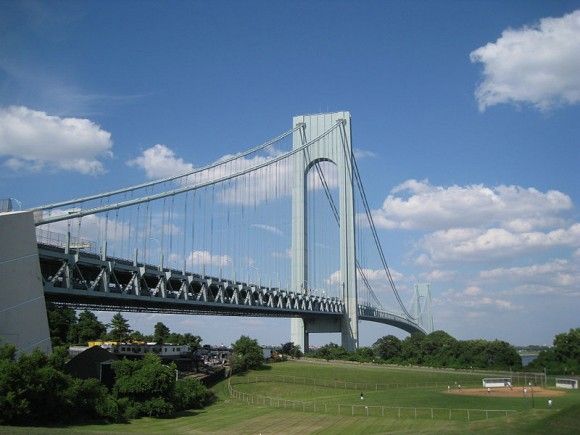MTA Defends Actions Regarding Chinese Steel On Verrazano Bridge Project

Facing a torrent of criticism from local politicians and union steel leaders, the MTA issued a thorough defense of their plans to use Chinese steel products in their Verrazano-Narrows Bridge renovation project. MTA Chairman and CEO Tom Prendergast wrote a letter defending the agencies actions to the New York Daily News.
As we’ve previously reported, the MTA’s decision to employ Chinese steel fabricators on their $235 million renovation project raised the ire of State Senator Diane Savino and Assemblywoman Nicole Malliotakis, who penned a joint letter urging the MTA to reconsider American alternatives. The MTA also took heat from US steel union representatives who accused the agency of looking for the cheapest deal possible.
To combat the growing outrage, in his letter, Prendergast claims that many of the accusations are full of falsehoods – especially the perception that no Americans would be working on the project:
The decision to use some steel from China has come under intense but unfounded criticism. I want to set the record straight, because the attacks are rife with misinformation.
The MTA tried and failed to find an American company to fabricate steel panels for this vital project. We have a long record of aggressive efforts to purchase from New York and American vendors, and we were disappointed we could not do so with these panels.
The contractor performing the bridge project is an American company. It will replace the 49-year-old bridge’s concrete deck with one made of orthotropic steel panels, which will significantly reduce the bridge’s weight while making it better able to withstand stress.
Predergast also pledged that a majority of the $235 million will be spent in America and that American workers will be racking up over one million hours in labor over a four-year span. The MTA Chairman also reiterated the agency’s belief that no American steel manufacturing plant was capable of providing the services needed and that cost was not a factor in determining that conclusion:
Not a single American fabricator had the capacity, the experience and the willingness to tackle the job. Contrary to some claims, price was not a factor in this decision. The American steel industry has not focused on the process of fabricating orthotropic steel decks for projects of this size and complexity, while fabricators in other countries have specialized in it.
With no American firms willing to commit to fabricating the orthotropic steel panels, the work was subcontracted to firms in China, which are being held to exacting safety and quality standards.
Producing the steel will cost an estimated $12 million, and fabricating it into orthotropic panels will cost an estimated $22 million. The remaining $201 million value of the contract will be spent in America.
In concluding his argument, Prendergast expressed a commitment to investing in American jobs and the economy of New York. Whether or not Prendergast’s defense will quell all the criticism remains to be seen.




